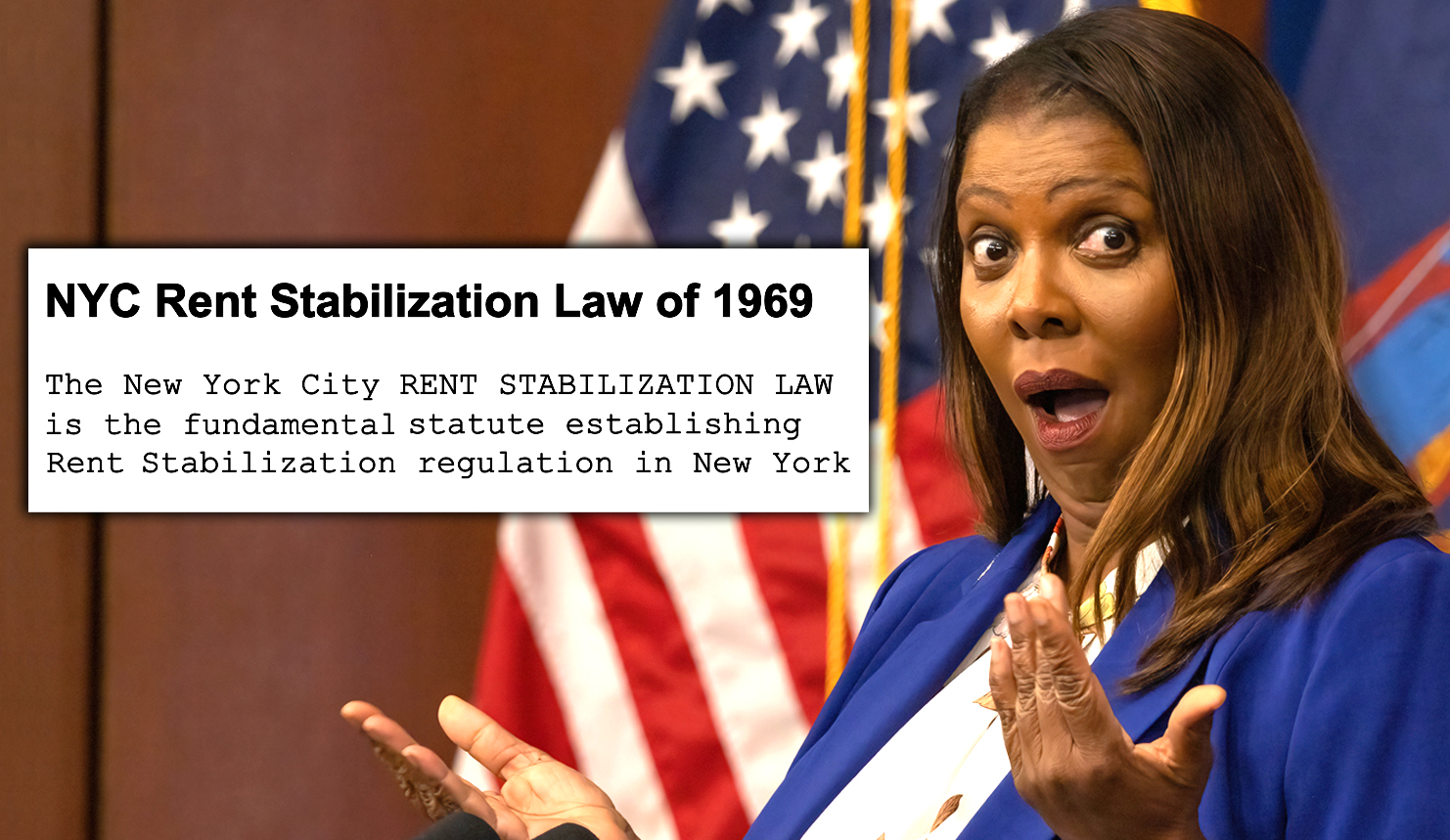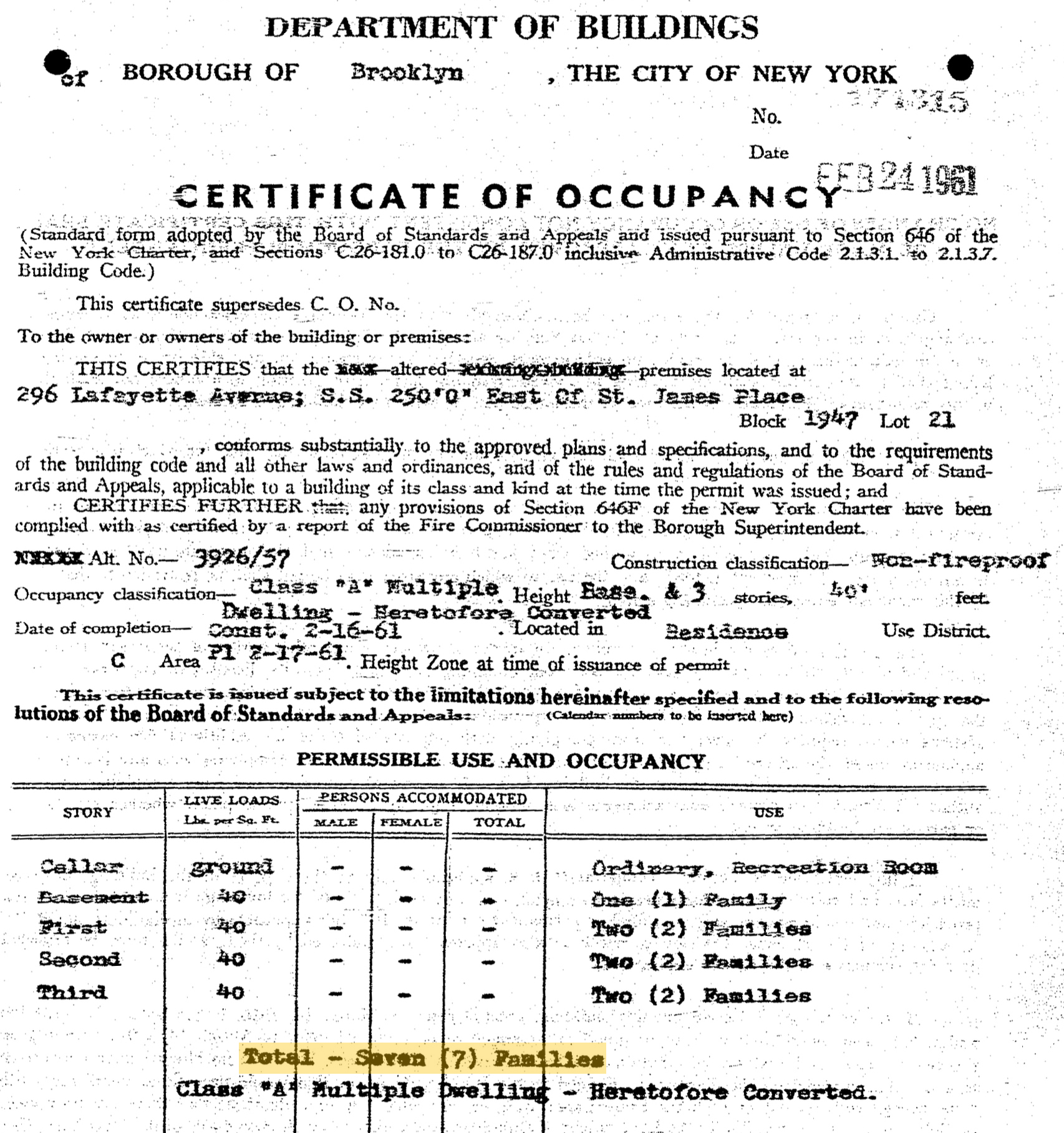

New York State Attorney General Letitia James, long claiming to be a public champion of tenants’ rights, has herself been in violation of New York City’s rent stabilization laws for more than two decades.
Since purchasing a four-story apartment building at 296 Lafayette Avenue in Brooklyn in 2001, James has failed to register the property with the New York State Division of Housing and Community Renewal (DHCR) as required for rent-stabilized buildings.
By failing to register, she denied her tenants the protections of rent stabilization, while collecting rents above the legally regulated amounts for 24 years.
New York City’s housing code is based on its “Rent Stabilization Law of 1969,” which was designed to shield tenants from large rent raises, unlawful deregulation, and eviction abuses.

It sets yearly allowable rent increases, typically at around 3% per year. The law applies to qualifying buildings and requires landlords to register with DHCR and file annual reports on tenants, rents, and lease terms.
The NYC Department of Buildings (DOB) issues Certificates of Occupancy to establish the legal number of units in properties. That designation is the one and only controlling legal authority for unit count. The three most recent Certificates of Occupancy for Letitia James’s building at 296 Lafayette Avenue are:
1961: Authorized as seven (7) family units, with the building officially designated as a “Class A Multiple Dwelling.”
1981: Two decades later, the legal unit count was reduced to four (4) apartments, reflecting an authorized combining of units.
2001: This Certificate of Occupancy updated the building to a FIVE (5) FAMILY DWELLING, which remains its designation today.

The Rent Stabilization Law of 1969 said that any building constructed before January 1, 1974, with six or more apartments, is subject to “Rent Stabilization” laws.
The critical point for Letitia James is that, according to the 1961 Certificate of Occupancy, the last one before the passage of the Rent Stabilization Law in 1969, her building at 296 Lafayette Avenue had seven (7) units. This meant that when the law took effect in 1969, James’s building was permanently entered into rent stabilization program.
Once a building is subject to rent stabilization, that status “runs with the building” forever. Later reductions down to four units, or back up to five units, can never legally strip the building of its original rent stabilization regulatory status.
Courts and DHCR have repeatedly emphasized that a landlord cannot deregulate a property from rent stabilization by simply reducing the number of units through alterations or new Certificates of Occupancy.
In Gersten v. 56 7th Ave. LLC (2005), New York’s highest court held that rent stabilization coverage cannot be destroyed by unilateral landlord action.
Despite her registration requirements, public records show that Letitia James has never registered 296 Lafayette Avenue with DHCR since her purchase in 2001. Nor has she filed the required annual tenant registrations for any of her building’s apartments.
The consequences of James’s failure to register are significant. Under RSC § 2528.4, a landlord who fails to register may not lawfully collect any rent increases. Having never registered since 2001, any rent increases by James since 2001 were unlawful.
In fact, if James charged tenants above the last legal rent increase in 2001, they can file overcharge complaints. DHCR and the courts may impose a refund of overcharges plus 9% annual interest, plus treble damages.
Given that her apartment building has been unregistered for nearly a quarter century, the potential overcharge and penalty exposure for Letitia James is massive.
Ironically, Letitia James has consistently positioned herself as a defender of rent stabilization laws and tenants’ rights in New York City.
She has argued that rent stabilization is a vital safeguard for working families, especially during periods of economic stress such as the COVID-19 crisis, and that her office would “do everything it can to defend New York’s rent laws and protect struggling tenants.”
James has even pursued direct legal action against landlords who violated rent stabilization protections. In August 2025, she sued Zara Realty for overcharging tenants in Queens, accusing the company of exploiting subsidy recipients, ignoring rent reduction orders, and pursuing unlawful evictions.
I have recently chronicled in The Gateway Pundit Letitia James’s fraudulent real estate and mortgage filings in which she obtained mortgages by misrepresenting her unit count.
Now, Letitia James’s failure to register with DHCR since 2001 undermines the integrity of New York City’s rent regulation as a whole.
Tenants lose the protections they are entitled to, including regulated leases, lawful rent raise limits, and the ability to challenge illegal increases. Meanwhile, the city loses accurate data on housing stock, frustrating policymakers’ ability to assess affordability.
Above all, the issue is about fairness and accountability. There is no higher standard for a person who holds the office of state Attorney General than upholding the rule of law, not just in words, but in deed.
New Yorkers can no longer stand for an Attorney General who abuses both the law and her constituents for personal financial gain.
For the integrity of her public office, Letitia James should resign her position as Attorney General, register her apartment building with DHCR, and make financial restitution to the many tenants whom she has badly mistreated for the past 24 years.
Joel Gilbert is a Los Angeles-based film producer and president of Highway 61 Entertainment. He is the producer of the new film Roseanne Barr Is America. He is also the producer of: Dreams from My Real Father, The Trayvon Hoax, Trump: The Art of the Insult, and many other films on American politics and music icons. Gilbert is on Twitter: @JoelSGilbert.
The post “Above the Law” Landlord: Letitia James Caught Violating New York’s Rent Stabilization Laws appeared first on The Gateway Pundit.

